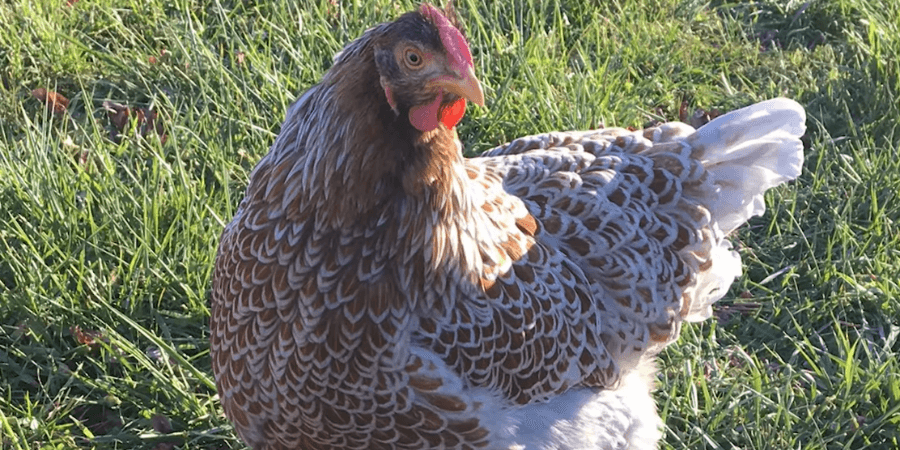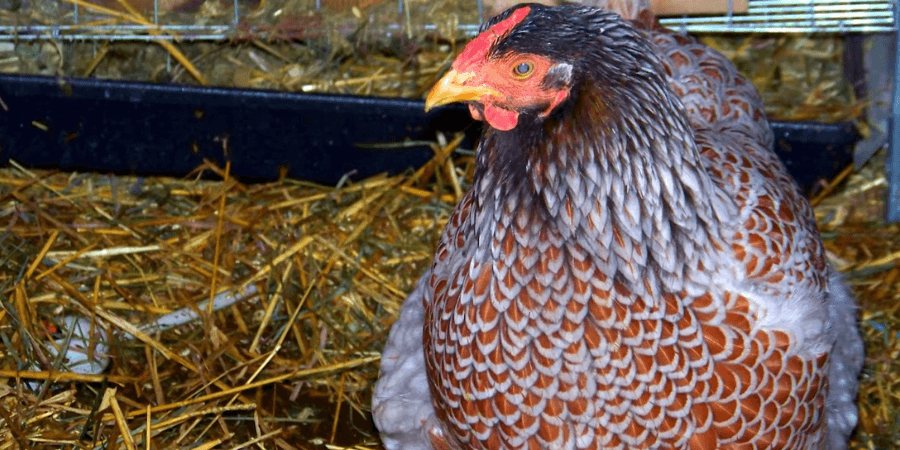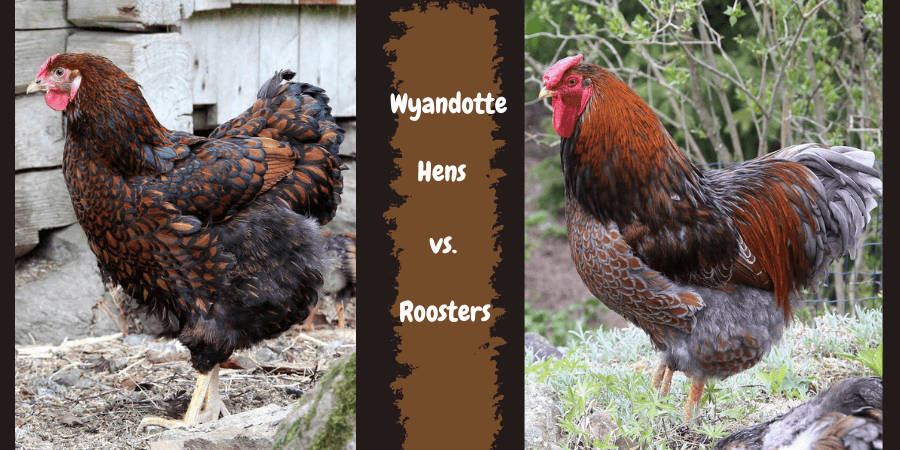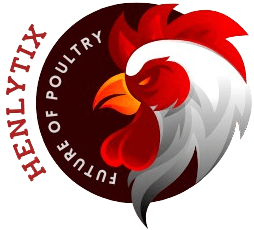When I first started raising Wyandotte chickens in my backyard flocks, I was fascinated by their history and qualities. These birds were originally developed in the United States in the 1870s when breeders aimed to create a dual-purpose breed that could produce both large quantities of eggs and ample amounts of meat. They grew rapidly, were resistant to frostbite, and became highly valuable.
Their popularity soared during the 19th century, but later declined as commercial breeds took over. Over decades, conservationists worked hard to bring them back, and by 2016 the breed graduated from the Livestock Conservancy’s Conservation Priority List as numbers rebounded to sustainable levels.
Today, they are popular again for egg production, attractive plumage, and reliability. When I compare a hen and a rooster, the differences often show in comb size, feather patterns, and behavior, making identification easier for anyone raising these beautiful birds.
How to Tell a Wyandotte Rooster from a Hen-The Answer
Young Wyandotte chicks start showing differences by 8 weeks. Roosters are more robust, with longer legs, larger combs and wattles that turn redder and shiny sooner, while hens stay more rounded. It’s best to wait until 5–6 months to be sure, checking saddle feathers, hackle feathers, and the glossy shine that make roosters distinct. By 4 months, the juvenile phase can confuse things—some feathers look glossy with sharp edges, while others stay uniform. Traits like pointed saddle feathers, a fleshy comb, and an early crow strongly signal a rooster. Since appearance varies, patience and watching how they grow—whether sturdier, lankier, or wider—gives the clearest answer once feathers fully mature.
How do I recognize young Blue Laced Red Wyandottes?

When raising Wyandottes, I’ve learned that even from an early age, small details help you determine whether you’re looking at roosters or hens. Around the chin you’ll notice thin, fleshy, hanging flaps called wattles, which become larger and redder as the chicken matures. A comb also develops on the top of the head, and while some hens can have fairly bright combs, roosters usually show them sooner and often wider in shape.
Their facial skin looks bolder, so be cautious not to rush into deciding too early. With experience, I’ve been able to distinguish their appearance more easily, as hens appear more dainty, while roosters have a robust build and sturdier structure.
Another difference lies in feather growth. Roosters feather out slower, sometimes showing only pinfeathers on their backs, while hens develop more fully formed feathers. Look at the saddle feathers along the back and the hackle feathers on the neck—roosters have pointed and shiny ones, with a distinct edge or gloss that makes them stand out, especially after a juvenile molt at approximately four months.
Hens’ feathers appear more rounded and uniformly colored. Legs and feet also reveal clues: roosters are often lankier, with longer limbs and sometimes a slightly larger body size. I’ve noticed the first crow often comes as a surprise, but by the second molt, the signs are obviously clear. Still, it’s best to use caution—traits like behavior, personality, or even breeding readiness can be unreliable, so staying careful, ready to reevaluate, ensures near absolute certainty.
For those raising show-quality birds, spotting the right phase of development is especially important, whether working with rose combs or the striking Blue Laced Red Wyandottes.
Spotting Size Differences in Wyandotte Roosters and Hens

From my own flocks of Wyandotte chickens, I’ve seen how their medium to large-sized and often curvy bodies clearly exhibit significant sexual dimorphism when it comes to size.
A Standard-size hen will usually weigh roughly 25 percent less than the roosters, which often reach weights of about 8.5 pounds, while the average hen is closer to 6.5. For those raising Bantam-size birds, the difference is still there, since both hens and roosters weigh approximately 2.5 pounds, showing how even small breeds keep the same balance between the sexes.
Plumage Patterns in Wyandottes: Hen or Rooster?
When young Wyandotte hens and roosters grow, it can be difficult to distinguish them by their plumage, as both sexes have close feathers that look silky rather than fluffy. In my experience, the laced and solid colored varieties begin to show differences with maturity, where older roosters develop longer, pointed hackles, saddle, and tail feathers, while hens stay more rounded.
The light color patterns also matter: some appear silvery white or golden, neatly rimmed with crisp black edges, especially in the silver-laced variety that was admitted to the American Poultry Association Standard of Perfection in 1883. Later, the APA recognized the golden-laced variety in 1888, and today there are about 19 different varieties of Wyandotte chickens, including around 10 bantam types, each with their own unique feather details.
Physical Traits that Set Roosters Apart from Hens
Although Wyandotte hens and roosters may appear similar in their looks overall, they differ in certain physical characteristics that are easy to notice with practice. In my own flocks, I have observed that roosters often show bright red flattened rose combs that sit closely on their heads, along with relatively short wattles, earlobes, and faces, while hens usually have the same features but in a smaller form.
Among these chickens, I also pay attention to their strong yellow legs and feet with four toes, as well as the sturdy beaks that carry a dark golden color. Both sexes share distinctly orange eyes, which always stand out and make identifying their health and alertness much easier.
By contrast, breeds like the Silkie Rooster display very different traits, such as fluffy plumage and unique comb shapes, making them stand out from Wyandottes.
Temperament Traits in Wyandotte Roosters and Hens

From my own experience raising Wyandotte chickens, I’ve noticed they are generally friendly, quite calm, and often docile, which makes them easy to tolerate handling. They make good show birds thanks to their slow, easy-going nature, and they are an enjoyable backyard companion. Many owners describe them as talkative, though not excessively noisy, which is why this breed is often favored by families.
A Wyandotte enjoys free-ranging, but also adapts to confinement easily, and while not great flyers, they can still reach high roosts or hop over low fences. That’s why I always plan and invest in a tall fence or a covered enclosure to keep them secure. If you’re keeping roosters, you may also need to learn basic care practices like how to Remove Rooster Spurs, since overgrown spurs can sometimes cause injuries in the flock.
When it comes to interactions, Wyandottes rarely behave aggressively toward humans, though they don’t usually enjoy being cuddled. They get along along fairly well in a mixed flock, but I’ve seen both hens and roosters act a little dominant or even pushy with other breeds.
Some owners even call them aloof, since they often prefer to stick to their own kind in flocks. These small differences in temperament are important when deciding whether a Wyandotte rooster or hen fits best in your setup.
Wyandotte Roosters vs. Hens: Which Produces What?
Over the years, I’ve seen how Wyandotte chickens have been bred for both meat and egg production, making them highly productive layers. The hens often lay roughly 200 eggs each year, and they do so consistently, even through the winter months. They usually begin at the age of about 16 to 20 weeks, which is much earlier than some other breeds like the Brahma chicken.
During their peak years, they produce an average of four large brown eggs per week. I’ve noticed many hens turn broody, and according to breeders, they are good mothers, often raising around 12 chicks in a single brood, though egg output tends to wane after about three years.
On the other hand, roosters grow quickly to a full size, often reaching 8.5 pounds, which means they can provide ample lean meat. In my flock, they’ve been ready for the table by five to six months, but for the most tender results, I always recommend harvesting closer to four months. Their dual-purpose nature is why Wyandottes remain one of the most reliable choices for small farms and backyard keepers alike.
In some flocks, ornamental breeds such as the Blue Laced Red Wyandottes are kept not only for beauty but also for their calm and friendly temperament.
Wyandotte Hens vs. Roosters: A Summary

The Wyandotte breed clearly displays considerable sexual dimorphism in size, yet both hens and roosters can look quite similar in their plumage prior to full maturity. From my own flock, I’ve found it becomes relatively easy to distinguish individuals once they reach about 16 to 20 weeks of age. At that age, the hens start laying eggs, while the roosters begin to crow, and those behaviors make the differences unmistakable.
Frequently Asked Questions
How can you tell if a Wyandotte chicken is male or female?
To check the sex of Wyandotte chickens, I focus on two primary methods: the feather lacing at the neck and shoulders, and the comb and wattle development.
Pullets (females) show distinct full lacing around, while cockerels (males) have solid coloring and a cape. With age, the males get larger redder combs and wattles, and the females have smaller paler versions until they are near laying.
What is the difference between a Wyandotte rooster and a hen?
Wyandotte roosters are distinguished by larger redder combs, wattles, and vibrant pointed hackle at the neck, plus saddle back feathers and the presence of long sickle-shaped tail feathers. Hens show smaller rounder combs, more uniformly laced feathers, a sturdier, less flashy appearance, and their main function is laying eggs.
What age can you tell a Wyandotte rooster?
From my experience, Wyandotte chicks are typically distinguishable by gender around 4-6 weeks of age. The males often exhibit slower development of wing and tail feathers compared to the females, though this sign is not always definitive and should be observed alongside other traits as they grow.
How to tell if a golden laced Wyandotte is a rooster?
The facial skin of roosters shows wattles that are notably larger and redder sooner than in hens, with wider combs too, though be cautious since some hens look fairly similar. In addition, feather growth in roosters is slower, making it another way to spot the difference.
Conclusion
Telling a Wyandotte rooster from a hen takes patience, observation, and practice, but the clues are always there. From differences in combs, wattles, and feather growth to variations in size, plumage, temperament, and even egg or meat production, each detail helps build a clearer picture. By carefully watching traits like hackle and saddle feathers, listening for the first crow, or noting when hens begin laying eggs, you can grow more confident in recognizing the sex of your birds. With time, these signs become second nature, making it easier to manage your flock and enjoy the unique qualities of both Wyandotte hens and roosters.
Read about: What Does a Rooster Symbolize? Spiritual Insight & Power


